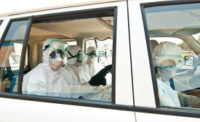Thirty-five states and Washington D.C. scored a six or lower on 10 key indicators of public health preparedness, marking persistent gaps in the country’s ability to respond to health emergencies, ranging from bioterrorist threats to serious disease outbreaks to extreme weather.
According to the 10th annual Ready or Not? Protecting the Public from Diseases, Disasters, and Bioterrorism report, issued by the Trust for America’s Health (TFAH) and Robert Wood Johnson Foundation (RWJF), many of these gaps are due to budget cups and capacity challenges.
“Public health preparedness has improved leaps and bounds from where we were 10 years ago,” says Paul Kuehnert, MS, RN, director of the Public Health Team at the Robert Wood Johnson Foundation. “But severe budget cuts at the federal, state and local levels threaten to undermine that progress. We must establish a baseline of ‘better safe than sorry’ preparedness that should not be crossed,” he says in an RWJF report.
Key findings include:
- 29 states cut public funding from fiscal years 2011-11 and 2011-23, with 23 of these states cutting funds for a second year in a row and 14 for three consecutive years. In addition, federal funds for state and local preparedness have increased 38 percent from FY 2005-2012 (CDC funds, adjusted for inflation). States report that gains in public health preparedness achieved in the past decade since September 11, 2001, are eroding, and since 2008, budget cuts have resulted in more than 45,700 job losses at state and local health departments.
- Only two states have met the national goal of vaccinating 90 percent of young children, ages 19-36 months, against whooping cough (pertussis). This year, Washington state has seen one of the most significant whooping cough outbreaks in recent history.
- 35 states and Washington D.C. do not currently have complete climate change adaptation plans, which include planning for health threats posed by extreme weather events.
- 13 state public health laboratories report they do not have sufficient capacity to work give 12-hour days for six to eight weeks in response to an infectious disease outbreak, such as novel influenza A H1N1.
You can read the full report here (PDF).



